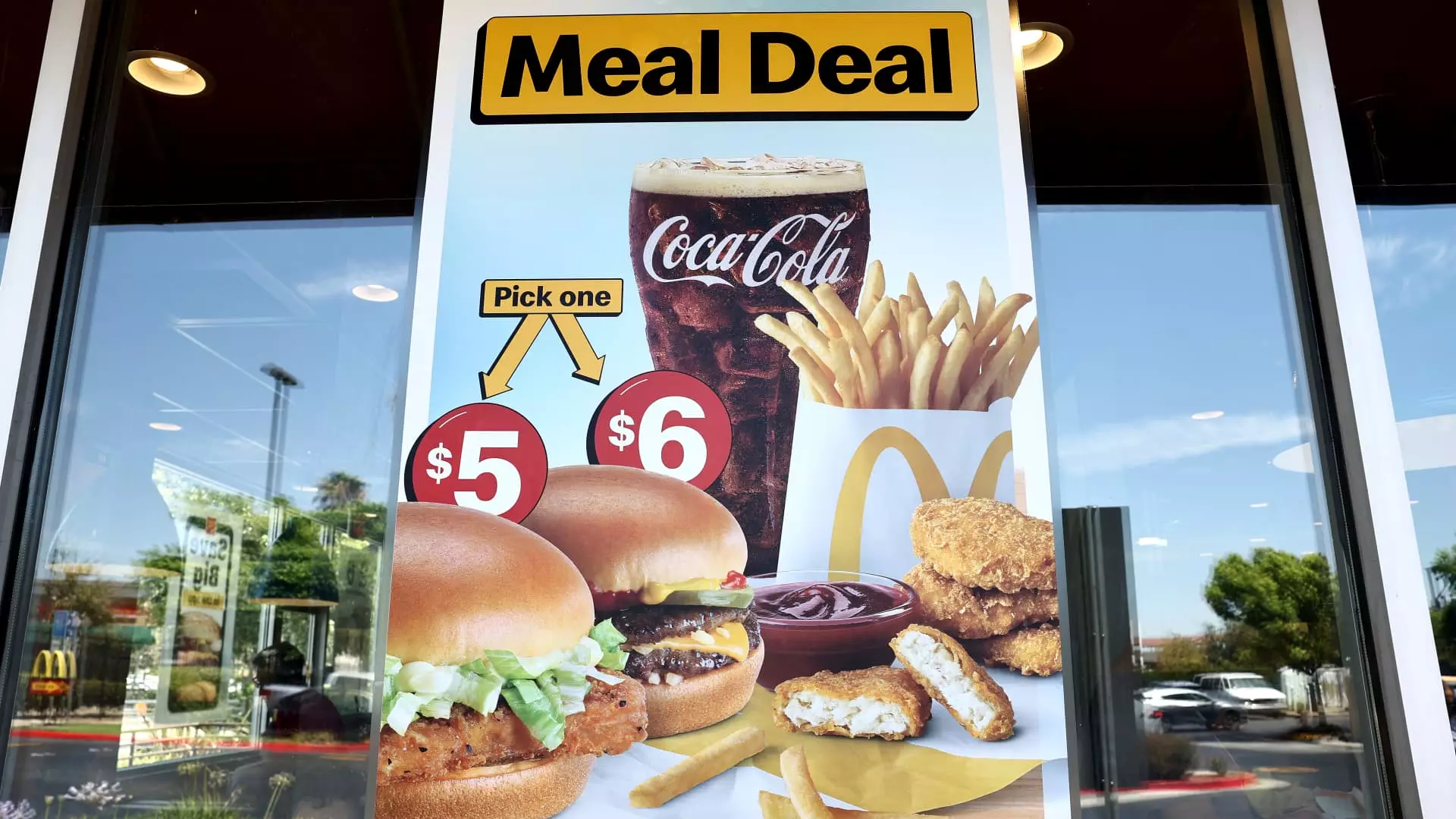Fast-food chains like McDonald’s, Taco Bell, Burger King, and Wendy’s have recently reintroduced or unveiled meal deals priced at $5. This strategy aims to attract customers who have reduced their spending amid economic uncertainty. While McDonald’s reports an increase in traffic as a result of these promotions, investors remain cautious about a significant sales boost across the board.
Over the years, rising menu prices have led consumers to reevaluate the value proposition of fast food. According to a recent LendingTree survey, more than 60% of respondents have cut back on fast-food spending due to perceived high costs. This trend has affected low-income customers disproportionately, impacting the overall customer base of fast-food chains.
As a response to this shifting consumer sentiment, some casual-dining chains like Chili’s have emphasized their value proposition compared to traditional fast-food options. The competition for the less affluent customer segment has intensified, prompting changes in marketing strategies to highlight affordability and quality.
The market has reacted negatively to the challenges faced by fast-food chains, with key players experiencing double-digit declines in share prices. Investor confidence has waned, reflecting concerns about a slowdown in sales growth and competition from other segments like casual dining. The second quarter is expected to be challenging for many large chains, with potential misses on consensus estimates.
Traditionally, fast-food chains focus on discounts and value meals in the first quarter to capitalize on consumer preferences for savings post-holiday season. However, the current market conditions have pushed these chains to rely on deals to drive traffic and boost sales growth. The limitations on menu price increases have forced operators to innovate with value-focused offerings.
Value meals are not just about increasing traffic but also about upselling additional items to customers. The challenge lies in converting deal-seeking customers into higher-spending consumers by introducing complementary products. Failure to do so may impact profitability in the long run, raising concerns among investors about sustainability.
Franchisees, a significant part of the fast-food ecosystem, often resist discounts due to their impact on profits. The emergence of larger franchisees with more resources has amplified their bargaining power against parent companies’ promotional strategies. Recent examples, like McDonald’s National Owners Association, highlight the tensions between operators and corporate mandates.
Franchisees’ skepticism towards promotions, coupled with concerns about profitability, underscores the operational challenges facing fast-food chains. Balancing the need for discounts to attract customers with the long-term financial sustainability of the business remains a key issue for both operators and investors.
The $5 fast-food dilemma reflects the complex interplay between consumer perceptions, investor expectations, and operational realities. While meal deals and discounts may drive short-term traffic, their effectiveness in boosting overall sales and profitability in the long run remains uncertain. Fast-food chains must navigate these challenges strategically to weather the current economic climate and evolving consumer preferences.

